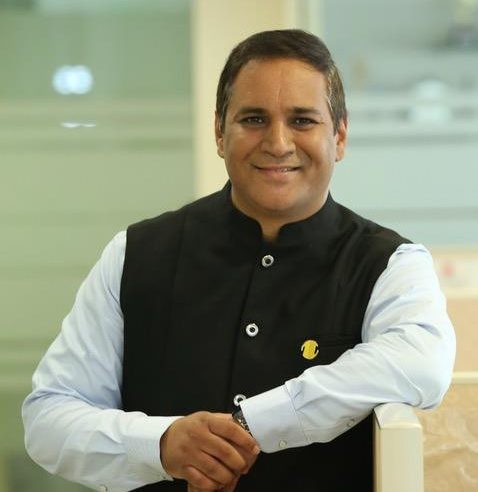At the turn of the century, some of us set out to find an alternate way to look at development. Capitalist principles had brought about steep economic growth; however, this had come with gaping economic disparity. We wanted to understand: could one tame capitalism and steer it to bring positive change in the lives of those who had hitherto been ignored in capitalist systems? Could entrepreneurship help make the world more equitable, by empowering those excluded from economic activity and disenfranchised from making choices?
The quest for answers to these questions in India, USA, Europe, and Africa, led to the birth of impact investing.
How is the impact investor different?
Given that most investments, at first sight, make impact, it may seem that there is a significant similarity between a commercial investor and an impact investor. Both need to find entrepreneurs, evaluate business plans, help attract new talent and capital to scale, and back ideas or enterprises that take risks and generate returns.
For the impact investor, it is imperative that the business passes the impact screen before even conducting diligence on its return potential.
The difference is that for the impact investor, it is imperative that the business passes the impact screen before even conducting diligence on its return potential, whilst for the conventional investor, maximising returns is the sole objective.
The other critical difference is that the impact investor is seeking a profitable solution to a complex social problem, most likely in a broken ecosystem. A venture investor, on the other hand, is creating value by filling a ‘want’ gap in an evolved ecosystem to achieve a disproportionate return.
And, finally, an impact investor is aware that their absolute return can be similar to a commercial investor’s return; but if adjusted for risk, the returns may be lower in comparison.

Making investments needs to be looked at from a different lens–merely investing and expecting the impact to trickle down is not enough. | Photo courtesy: Garry dr on Flickr
Who owns the impact?
Having established the role of an impact investor, we move to the more vexed issue: who makes the impact and hence who owns it?
The impact investor’s role in creating impact is limited to the strategy of finding the most impactful idea and channelling capital to it. Hence, the right impact metrics for a fund to report would be its contribution in identifying the complex social problem; the number of entrepreneurs it supported to solve the problem; the governance and diversity it promoted; the initiatives the fund took to reach new or challenging geographies that do not usually attract commercial capital; the kind of commercial capital that was attracted by the fund; and the value added by it in furthering the thesis of impact.
Related article: IDR Explains | Impact investing
While it may seem obvious for a fund to report on the social impact achieved by its investee companies, the issue is a bit more nuanced. The impact created by the social enterprise and its attribution to investors (based on ownership) may lead to a perverse incentive for late-stage investing, as an investment when the company has already scaled would be wrongly construed to have ‘more’ impact.
While many alternatives can be explored to make impact reporting more effective—including simple benchmarking at the time of investment and reporting only additional outreach—we recommend reporting the enterprise’s impact without seeking attribution or claiming ownership for that impact.
Impact investing brings together different stakeholders—the limited partner, the impact investor, the entrepreneur, the community on the ground—to achieve a complex goal. All these stakeholders come from different cultural contexts and values, and one person’s definition of impact may not align with the other’s. For an impact investor, navigating these differences can be difficult but is paramount to create real on-ground impact.
Stakeholders come from different cultural contexts and values, and one person’s definition of impact may not align with the other’s
One such example was our investment in a company that was running a Business Process Outsourcing unit (BPO) 7,000 feet above sea level in northern India. This was the first time that formal jobs were created in that village, giving employment opportunities to both young men and women.
To the investing community, this represented a successful project that had the potential to create a significant impact in an underserved community. The villagers however did not share the same view, because this was the first time that a boy and a girl from the village had fallen in love and eloped from the village. And the villagers blamed the BPO for it.
From the villagers’ point of view, it had dented their culture and peace; while from the girl’s and boy’s perspective, this opportunity gave them the financial freedom to exercise their basic rights. To the limited partners across the globe, this project created jobs and changed lives.
The point here is that impact is contextual and is recognised differently by different stakeholders.
Already a complex subject, impact investing is further complicated by the conflicting cultural backgrounds of not only the investors and entrepreneurs but also the customers, communities, as well as the employees of the impact investment fund.
What counts as impact?
The impact investing movement has benefitted over the years from many positives, such as its championing by the Global Impact Investing Network (GIIN), India Impact Investors Council (IIIC), Global Steering Group and initiatives such as Sankalp and SOCAP. The announcement of the United Nations Sustainable Development Goals (SDGs) that were signed by 193 countries to create a world free of hunger, poverty, and inequality was another positive.
We would need to invest USD 2-3 trillion every year, for the next 12 years, to come anywhere close to meeting the SDGs.
In a study conducted by the Business Commission for Sustainable Development, that I was a part of, we determined that we would need to invest USD 2-3 trillion every year, for the next 12 years, to come anywhere close to meeting the SDGs. The study found impact investing to be a credible and effective tool to realise some of these goals.
These developments have led to the allocation of large pools of institutional capital from pension funds and insurance companies to impact investments. This means that we now have new participants in the impact investment ecosystem, including those from the world of asset management, private equity, and hedge funds. Many of them have relationships with these capital providers, and are of the erroneous opinion that an investment that makes impact is similar to impact investing. Thus, building a careful dialogue between the neo-converts and the specialised impact investors is becoming increasingly critical.
While it is encouraging to see the growing momentum in impact investing, it is equally important to categorically find a way to raise the threshold of being an impact investor from one that merely entails adding the suffix, ‘Impact’ to your fund’s name and publishing an Impact Report.
Related article: The other capital in impact investing
Where are we headed?
I empathise with the fact that making attractive commercial returns and changing the world simultaneously is difficult. However, I strongly believe the world cannot be changed without doing anything different from what has been done over centuries. Making investments needs to be looked at from a different lens—merely investing and expecting the impact to trickle down is not enough.
We cannot allow impact investing to become a victim to the dictum that all investments make an impact in some way and hence there is no major need to do anything different. The mere act of investing cannot help us re-imagine a world that is free from hunger, poverty, and inequity. Solving such inequities requires a more committed and conscious approach to investing, and that soul of impact investing cannot be compromised.
I believe the next decade will be spent in trying to create a correlation between capital deployed and the impact created on the ground. There is also a need to create a tradeable impact currency (like carbon credits) that can help bridge the gap between those who are creating impact and those who are ‘impact washing’. This will go a long way in facilitating the expansion of the sector without damaging the deeper goal of impact investing.




